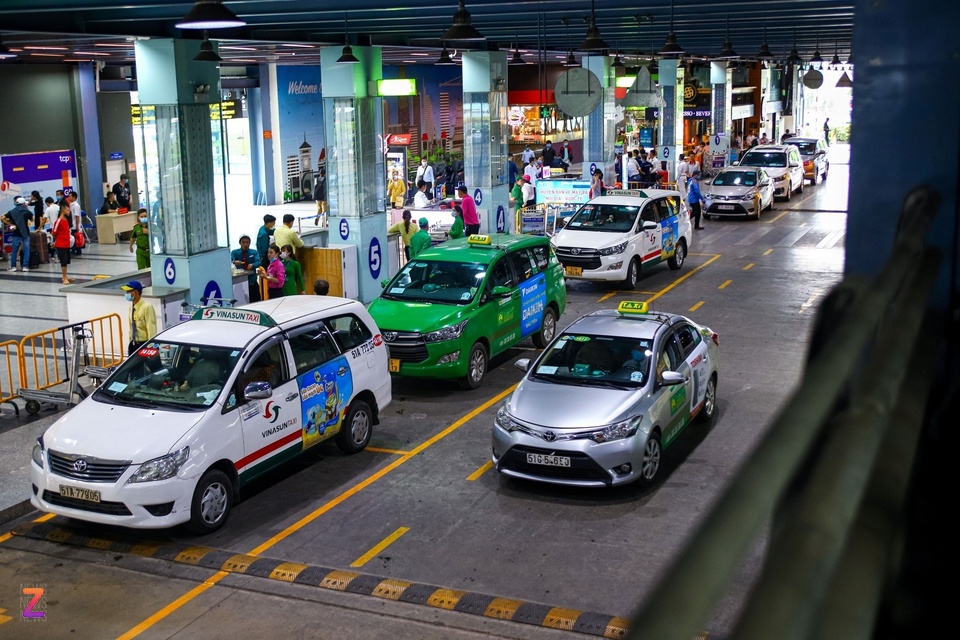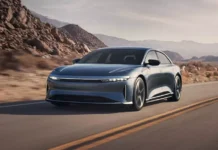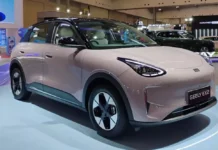
|
The sight of turquoise and cream-colored cars on the streets of Ho Chi Minh City marked the introduction of a new service named “taxi.” Over the years, the Vietnamese taxi market has undergone significant transformations, witnessing intense competition among major players.
Traditional Taxis: Twice the Race, Twice the Loss
Prior to 2014, traditional taxis, dominated by two prominent brands, Taxi Mai Linh and Vinasun, held a monopoly in the Vietnamese market. Vinasun and Mai Linh were once the go-to companies for thousands of drivers. At their peak, Vinasun possessed over 4,600 vehicles, mainly operating in the southern region, while Mai Linh boasted a fleet of more than 12,000 vehicles of various types.
However, in 2014, two ride-hailing giants, Uber and Grab, entered the Vietnamese market, disrupting the profit curve of the old-style taxi businesses. Between 2016 and 2019, traditional taxis experienced a continuous decline in market share, with little prospect of recovery.
The traditional taxis were at a disadvantage due to higher operating costs and a lack of technological advancement compared to the international giants. Grab and Uber’s strategy of heavy investments and numerous incentives for both drivers and passengers proved successful in gradually capturing the taxi market in Vietnam.
|
|
|
Traditional taxis struggled to compete with Grab and Xanh SM. Image: VNS. |
To alleviate financial pressures, taxi companies devised alternative solutions. Instead of focusing on the general public, they targeted niche markets, such as foreign tourists, businesspeople, or collaborated with vehicle owners instead of investing in their fleets.
Just as they were beginning to recover, traditional taxis faced another formidable opponent: Xanh SM, a ride-hailing company established by Vingroup’s chairman, Pham Nhat Vuong, which entered the market in April 2023.
Confronted with a competitor that combined technology with cost-effective operations, traditional taxis, especially those running on gasoline, found themselves at a significant disadvantage. Moreover, Xanh SM’s secret weapon was the electric vehicle fleet from VinFast, which offered a substantial advantage in terms of operating cost savings.
Unless traditional taxis made the switch to electric vehicles, their survival in the market would be challenging. This outcome has already been evident in China, where electric taxis now dominate the industry.
On the other hand, the once-dominant ride-hailing group in Vietnam also faced challenges after a few years of ruling the market.
The Rise of Ride-Hailing Apps: A Short-Lived Dominance?
Ride-hailing apps, led by Grab and Uber, once enjoyed a prolonged period of success in the Vietnamese market, capturing over 73% of the market share in 2018 and outperforming traditional taxis.
During the period of 2014 to 2019, Grab and Uber aggressively entered the Vietnamese market with numerous promotional programs. They continuously reduced fares for passengers and offered incentives for drivers to gain a competitive edge. This race to invest heavily in the market, however, was short-lived, with Grab ultimately emerging as the victor as Uber exited the market in early 2018.
|
|
|
Uber and Grab once created a duopoly in the ride-hailing service market. |
Following Uber’s departure, Grab became the undisputed leader in the taxi industry. However, this marked a shift from offering generous incentives to a more profit-oriented approach. For passengers, Grab swiftly minimized promotional programs and limited fare discounts.
Notably, Grab’s fare stability has been a subject of controversy. During peak hours, at hospitals, schools, concert venues, sporting events, or during heavy rain or holidays, Grab’s fares could surge by two to five times, or even tenfold if there was a shortage of drivers. On numerous occasions, Grab’s fares exceeded those of traditional taxis.
The lesson learned from Uber and Grab’s pricing strategy is not unique globally, but when traditional taxis were already struggling, passengers had limited alternatives, resulting in higher costs during certain periods.
For drivers, the cost of using the Grab application (known as the platform fee or commission) has steadily increased. Currently, Grab-affiliated taxi drivers are required to pay a 25% platform fee based on the total fare of each trip.
|
|
|
GrabCar fares often surge during peak hours. Image: Grab. |
This situation created a demand for a new player in the market, one that could compete with Grab, optimize benefits for both users and drivers, and here is where Xanh SM stepped in.
Xanh SM successfully challenged Grab’s dominance in the taxi market without expending significant time or resources. According to the annual report on the Vietnamese taxi market published by Mordor Intelligence at the end of 2024, Xanh SM surpassed Grab (36.62%) and took the lead with a market share of 37.41%.
Xanh SM Takes Control of the Game
Xanh SM’s success stems from its operational strategies and market understanding. Xanh SM addressed almost all of Grab’s shortcomings upon its launch. From a passenger’s perspective, Xanh SM offers more stable fares, even during peak demand or in areas with high ride-hailing requests.
All vehicles in their fleet are supplied by VinFast, a pure electric car manufacturer within the same parent group. This is a significant advantage over Grab, as Xanh SM users can be assured of the vehicle type for their trip. Additionally, the electric vehicles in the Xanh SM fleet are newer and more modern compared to the gasoline-powered cars that Grab may dispatch.
|
|
|
Xanh SM emerges as a new choice. Image: Boi Ha. |
Xanh SM also employs a more reasonable and subtle approach to promotions and incentives. Instead of drastic price reductions followed by steep increases, they offer long-term discount codes that can be combined with other benefits from the VinClub ecosystem.
Through these strategies, Xanh SM has successfully attracted a massive user base, drawing users away from other ride-hailing apps.
In terms of platform usage costs, Xanh SM imposes a lower commission rate than its competitor, thereby attracting a large number of drivers. For drivers who purchase vehicles and partner with the company, the time to recoup their investment is shorter due to various incentives and support from VinFast and Xanh SM.
Currently, the platform usage cost for Xanh SM is over 10%. Based on a monthly revenue of 30-45 million VND, drivers can take home 27-40.5 million VND per month.
|
|
|
LimoGreen, the new all-electric 7-seater MPV for taxi services. Image: VinFast. |
Xanh SM’s greatest strength lies in its electric vehicles from VinFast. Compared to gasoline-powered cars, electric vehicles have lower operating costs. VinFast electric vehicle owners currently enjoy free charging until June 2027, which translates to zero charging costs at Vgreen stations and minimal costs for home charging. In contrast, gasoline-powered cars incur fuel costs of around 16.5 million VND per month.
Electric vehicles also score points for lower maintenance costs, as they do not require engine oil changes and have fewer wear-and-tear parts. The significant difference in operating and maintenance costs accelerates the payback period for VinFast electric vehicle owners partnering with Xanh SM.
Given these advantages, it is no surprise that VinFast electric vehicles, particularly those affiliated with Xanh SM, are becoming a common sight in the taxi service industry.
In 2024, with just two main models, VinFast VF e34 and VF 5, Xanh SM surpassed Grab in sales. The competition is expected to intensify as VinFast introduces four new electric vehicle models specifically designed for the service market.
With the introduction of these new players across various service segments, especially the 7-seater Limo Green MPV, Xanh SM is poised to strengthen its competitive position.
Xanh SM’s growth indicates the impending dominance of electric vehicles in the taxi service industry, as more taxi companies are opting for electric fleets.
Recommended Reads for Your Journey
Our Automotive section brings you a selection of captivating books with diverse themes. During your travels, these books can be wonderful companions, offering moments of relaxation and enrichment.













































